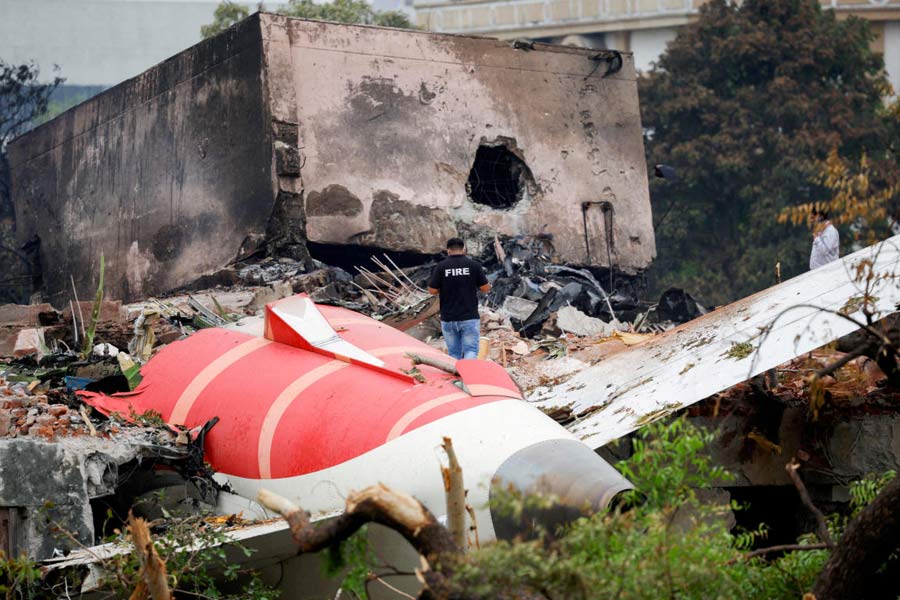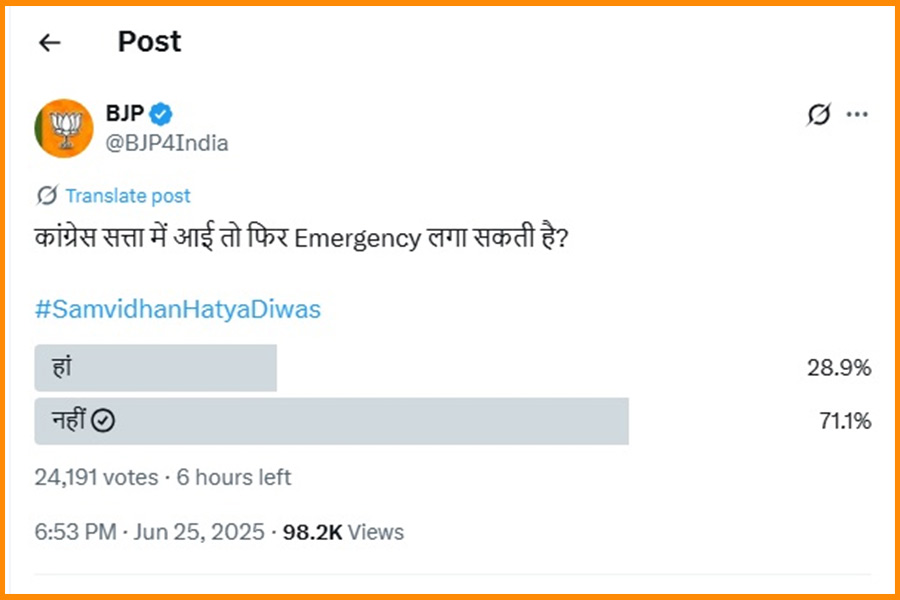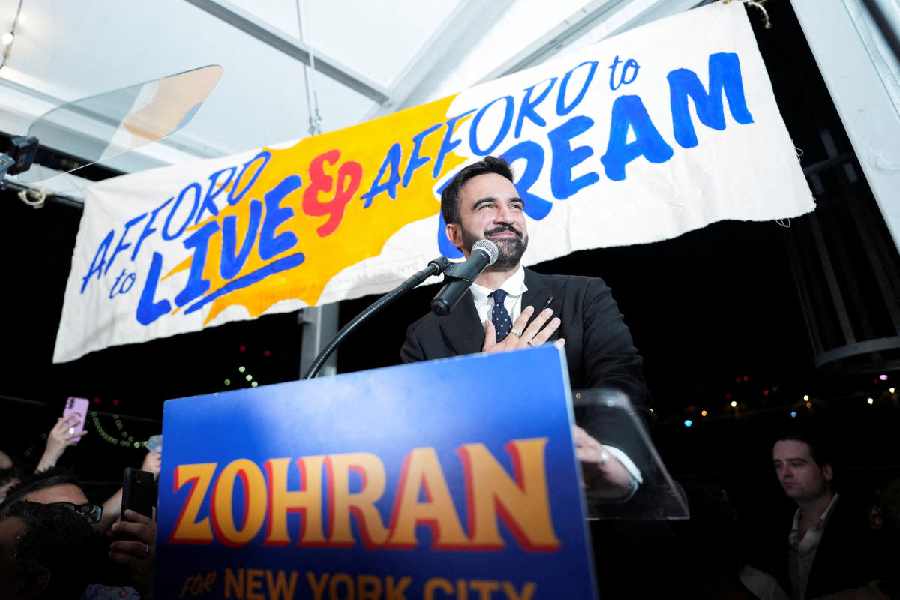|
|
| New-age commuting |
Many years ago, Mumbai ? or Bombay as we knew it ? was looked upon as the best example of urban management in the country. The only metropolis that came near it in terms of size and economic activity was Calcutta, and it was a very poor second indeed. Where Bombay has clean, smooth roads and streets, Calcutta had pitted, muddy tracks, over which tram tracks wound a wobbly way, leading to even bigger craters and gouged-off bits of ancient tarmac. Where Bombay had a steady power supply, Calcutta was stricken with long hours without electricity. It was only Calcutta?s water supply that could stand comparison, except that Calcutta water always tasted salty and Bombay?s was fresh.
And where Bombay?s waste disposal was virtually invisible and extremely efficient, leaving no evidence behind, Calcutta had mounds of fetid-smelling filth at almost all street corners, which were removed only occasionally, and in a manner that left trails of garbage on the ruined roads as the rusted contraptions passing for garbage lorries groaned and creaked their way to the huge unspeakable dumps to the east of the city.
The other cities were smaller, less like cities and more like sleepy district towns. Madras was quiet, with a few cars and cycles on the streets to give the buses company ? its roads were narrow, but adequate to cope with the scanty traffic. Waste did accumulate, but then was taken away in the night, and if the electricity supply did flicker occasionally, it never went out for too long.
Bangalore was a pleasant, gentle city, a city to which pensioners went to live in their pretty houses, where there were hardly any roads, except the very charming M.G. Road ? all the rest were really streets, whatever they may have been called, and most of them were lined with trees, with buildings set well back from them. The city was kept scrupulously clean, but being more manageable it wasn?t a hugely difficult task.
Bombay was where everything worth happening was happening, except for the politics and that was happening in the precisely laid out, planned city of New Delhi, its avenues shaded by thick trees, its heart consisting of gracious bungalows with large, immaculate green lawns and flower-laden gardens in which peacocks called. Surrounding it was, it must be said, a growing scab of ?colonies?, but they were too inconsequential to count.
And while the people of Bombay bustled about their daily work, the administrators cultivated a casual, supercilious air when talking of other cities. Requests from Calcutta or Madras for advice and guidance on matters relating to traffic, or even laying of roads were treated with indulgent superiority, even a little arrogance. The commissioner of the Bombay municipal corporation, the commissioner of police, the collector of Bombay were exalted human beings.
Not any more. After the torrential downpour in Mumbai in the last week of July, all that has finally ceased to exist. The Mumbai municipal commissioner has been shown up as an ineffective and pretty ordinary bureaucrat, a mere file-pusher incapable of coping with even a minor calamity, leave alone a disaster of the magnitude of the one that hit the city. And years of laziness and appalling neglect became all too apparent as the sewage and drainage systems collapsed, the roads buckled, the water supply lines were contaminated and ? the overriding irony ? when the power supply stopped, not for an hour, or four hours, but for four days.
But what is really a matter of concern is not the bureaucratic inadequacy in Mumbai, but the implication such a calamity has for urban India. For decades it has been usual for planners to give urban problems a priority lower than what is given to other sectors ? agriculture, social development, irrigation and others. Urban India has traditionally been seen as a kind of appendage in the Indian economy, classified, in the common perception, as middle class, moneyed, and therefore to be discounted. Enterprising politicians found it useful as a means of making money.
All this has been shown to be false, and not just by the deluge in Mumbai. Urban problems have begun to assume massive proportions: the horrifying traffic in Bangalore, the roads in Calcutta, the appalling power situation in Delhi ? these cannot be ignored any longer. For over a century, none of the sewage and drainage systems in our cities, which were laid out by the British, has been replaced. And what have our political leaders done about it? Nothing. The gnomes in the finance ministry have shuffled about, brows furrowed, and noted in files that there are no funds, never suggesting, as really wise financial counsellors would do, methods that could be explored to generate the funds needed. But they aren?t really to blame; none of those in the ministries concerned has really bothered.
They have a standard excuse. This is a matter, they will say unctuously, for state governments. And in a very narrow, bureaucratic sense, they would be right. But have they ? or anyone else ? paused to consider that today we have about 31 per cent of our population in urban areas, a percentage that will rise to over 50 in the next 30 or 40 years? Is it not the responsibility and duty of the Central government to consider what will become a national disaster of huge proportions a few decades on?
The problem, then, is not of giving Mumbai 500 or 5,000 crore. It is of the ministry of urban development putting together a special group to consider how the infrastructure of our urban areas must be changed to cope with the reality of 2065, when about half of India will be staying in those areas. Examples of third-rate planning abound; from bridges built in the middle of nowhere to non-existent schools. It?s time the urban sector is not pushed to one side, but given the concern that it needs right now, if we are to avoid turning into a dreadful urban nightmare in a few decades.
Urban India needs to be looked at with all the urgency that has been reserved for rural India; and one can only hope that it will mean results that are effective ? as effective as we keep hoping the efforts to improve rural India will become.












